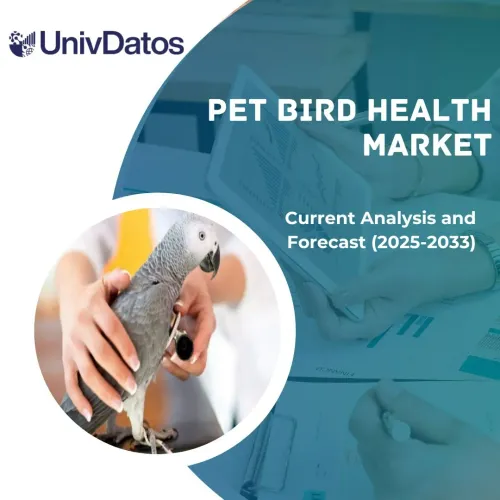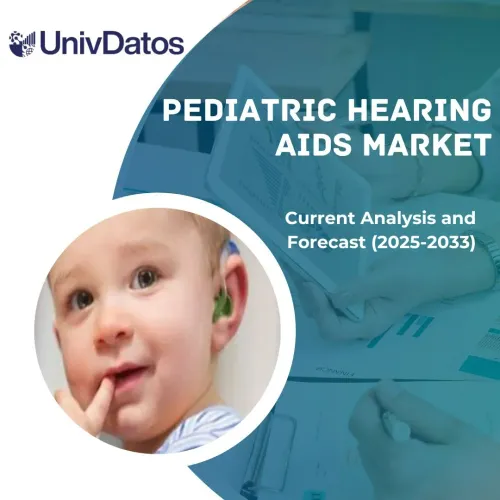- Home
- About Us
- Industry
- Services
- Reading
- Contact Us
Hereditary Deafness Market: Current Analysis and Forecast (2023-2030)
Emphasis on Diagnosis Type (Physical Examination, Molecular Genetic Testing, and Others); Treatment Type (Hearing Aids, Cochlear Implants, and Others); and Region/Country
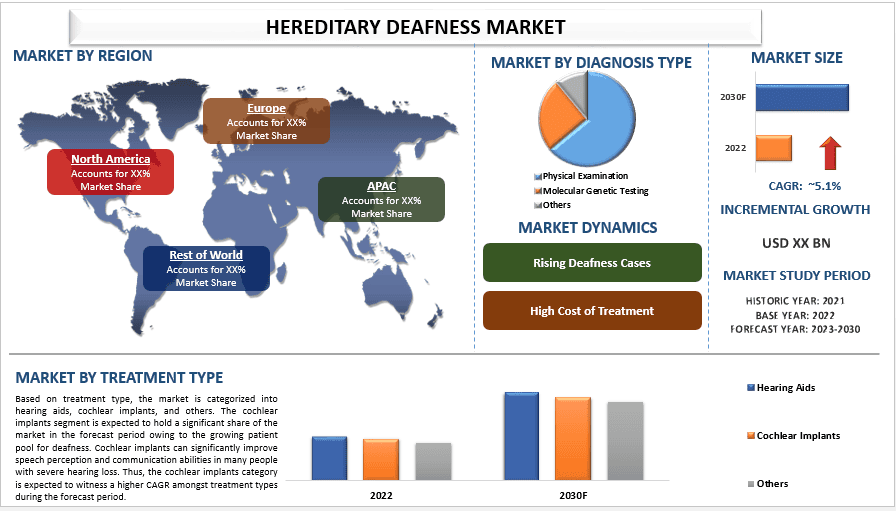
The hereditary deafness market was valued at USD 7.53 Billion in 2022 and is expected to grow at a CAGR of 5.1% during the forecast period (2023-2030). Hereditary deafness specifically refers to hearing loss caused by genetic factors rather than environmental or acquired factors like noise exposure or aging. Rising awareness of hearing loss amplifies emphasis on early detection, and genetic testing to identify hereditary causes of deafness. This can lead to more individuals being diagnosed with hereditary forms of deafness and seeking appropriate treatment options. Hereditary deafness mainly gained prominence in the market due to the rising innovations for developing treatments for deafness. For instance, in January 2024, Lexie Hearing, a leader in over-the-counter hearing aids, launched its newest product, the Lexie B2 Plus Self-fitting OTC Hearing Aids powered by Bose, which includes an enhanced in-app hearing test feature and a new charging carrying case and up to 18-hour charge to extend battery life. In addition to this, investments in otolaryngology departments as well as government awareness programs regarding hereditary deafness have increased significantly in recent years, which are the key factors that are creating opportunities for the market.
Cochlear Ltd; Envoy Medical; Advanced Bionics AG and affiliates; Zhejiang Nuoerkang Neuroelectronics Technology Co., Ltd.; Oticon Medical A/S; Medtronic; Sonova; Audina Hearing Instruments, Inc.; RION Co., Ltd.; GN Store Nord A/S are some of the key players in the market. Several M&As along with partnerships have been undertaken by these players to facilitate customers with hi-tech and innovative products/technologies.
Insights Presented in the Report
“Amongst diagnosis type, molecular genetic testing category to witness higher CAGR during the forecast period”
Based on the diagnosis type, the market is segmented into physical examination, molecular genetic testing, and others. The molecular genetic testing segment is expected to grow with a high CAGR during the forecast period because of the advancements in genetic testing technologies. Molecular genetic testing offers a high diagnostic yield, particularly for individuals with early-onset or severe deafness where genetic factors are more prevalent. A definitive genetic diagnosis can provide valuable prognostic information, guide treatment decisions, facilitate family screening, and inform reproductive counseling. Thus, the molecular genetic testing segment among diagnosis types is expected to witness a higher CAGR during the forecast period.
“Amongst treatment type, hearing aids held a significant share in the market in 2022”
Based on treatment type, the market is categorized into hearing aids, cochlear implants, and others. The hearing aids segment is dominating the market owing to the rising technological advances in hearing aids globally. For instance, in February 2024. Oticon launched its new hearing aid, Oticon Intent, which is the World’s First Hearing Aid with user-intent sensors that can understand a hearing aid user’s listening intention and respond accordingly. Hearing aids are small electronic devices worn in or behind the ear that amplify sound for individuals with hearing loss. They work by capturing sound from the environment, processing it to amplify specific frequencies based on the user’s hearing profile, and then delivering the amplified sound to the ear through a speaker. Thus, hearing aids held a significant share of the hereditary deafness market in 2022.
“Amongst regions, APAC is expected to witness a higher CAGR during the forecast period”
APAC is expected to grow with a high CAGR in the global hereditary deafness market in the forecast period. Several factors such as a surge in the introduction of a wide range of hearing aids, enhanced accessibility, and diversified healthcare costs are driving the market’s growth during the forecast period. Further, the increase in incidences of hereditary deafness is also having a positive impact on the market’s growth. There have been major awareness programs regarding hereditary deafness and product launches in the region. For instance, in February 2024, U.S.-based Starkey, a global leader in hearing technology, launched its revolutionary Genesis AI hearing aids in India. Thus, APAC is expected to witness a higher CAGR during the forecast period.
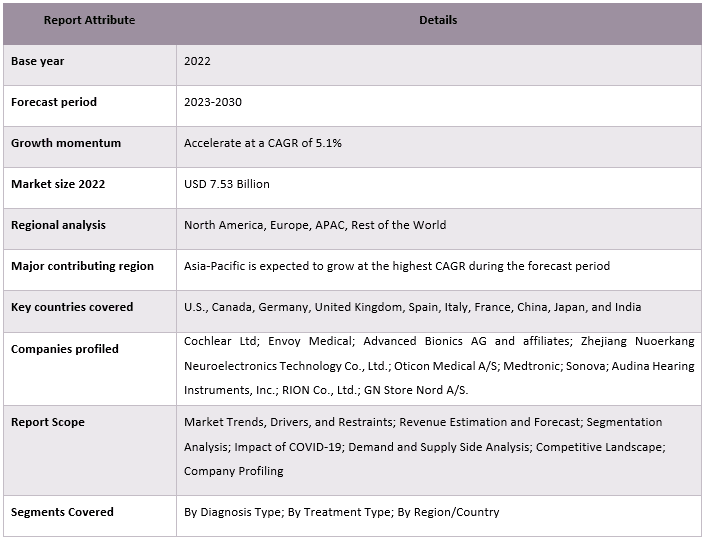
Reasons to buy this report:
- The study includes market sizing and forecasting analysis validated by authenticated key industry experts.
- The report presents a quick review of overall industry performance at one glance.
- The report covers an in-depth analysis of prominent industry peers with a primary focus on key business financials, product portfolio, expansion strategies, and recent developments.
- Detailed examination of drivers, restraints, key trends, and opportunities prevailing in the industry.
- The study comprehensively covers the market across different segments.
- Deep dive regional level analysis of the industry.
Customization Options:
The global hereditary deafness market can further be customized as per the requirement or any other market segment. Besides this, UMI understands that you may have your own business needs, hence feel free to connect with us to get a report that completely suits your requirements.
Table of Content
Research Methodology for the Hereditary Deafness Market Analysis (2023-2030)
Analyzing the historical market, estimating the current market, and forecasting the future market of the global hereditary deafness market were the three major steps undertaken to create and analyze the adoption of hereditary deafness in major regions globally. Exhaustive secondary research was conducted to collect the historical market numbers and estimate the current market size. Secondly, to validate these insights, numerous findings and assumptions were considered. Moreover, exhaustive primary interviews were also conducted, with industry experts across the value chain of the global hereditary deafness market. Post assumption and validation of market numbers through primary interviews, we employed a top-down/bottom-up approach to forecasting the complete market size. Thereafter, market breakdown and data triangulation methods were adopted to estimate and analyze the market size of segments and sub-segments of the industry pertains to. Detailed methodology is explained below:
Analysis of Historical Market Size
Step 1: In-Depth Study of Secondary Sources:
Detail secondary study was conducted to obtain the historical market size of the hereditary deafness market through company internal sources such as annual reports & financial statements, performance presentations, press releases, etc., and external sources including journals, news & articles, government publications, competitor publications, sector reports, third-party database, and other credible publications.
Step 2: Market Segmentation:
After obtaining the historical market size of the hereditary deafness market, we conducted a detailed secondary analysis to gather historical market insights and share for different segments & sub-segments for major regions. Major segments are included in the report as diagnosis type, treatment type, and regions. Further country-level analyses were conducted to evaluate the overall adoption of testing models in that region.
Step 3: Factor Analysis:
After acquiring the historical market size of different segments and sub-segments, we conducted a detailed factor analysis to estimate the current market size of the hereditary deafness market. Further, we conducted factor analysis using dependent and independent variables such as diagnosis type, treatment type, and regions of hereditary deafness. A thorough analysis was conducted for demand and supply-side scenarios considering top partnerships, mergers and acquisitions, business expansion, and product launches in the hereditary deafness market sector across the globe.
Current Market Size Estimate & Forecast
Current Market Sizing: Based on actionable insights from the above 3 steps, we arrived at the current market size, key players in the global hereditary deafness market, and market shares of the segments. All the required percentage shares split and market breakdowns were determined using the above-mentioned secondary approach and were verified through primary interviews.
Estimation & Forecasting: For market estimation and forecast, weights were assigned to different factors including drivers & trends, restraints, and opportunities available for the stakeholders. After analyzing these factors, relevant forecasting techniques i.e., the top-down/bottom-up approach were applied to arrive at the market forecast for 2030 for different segments and sub-segments across the major markets globally. The research methodology adopted to estimate the market size encompasses:
- The industry’s market size, in terms of revenue (USD) and the adoption rate of the hereditary deafness market across the major markets domestically
- All percentage shares, splits, and breakdowns of market segments and sub-segments
- Key players in the global hereditary deafness market in terms of products offered. Also, the growth strategies adopted by these players to compete in the fast-growing market
Market Size and Share Validation
Primary Research: In-depth interviews were conducted with the Key Opinion Leaders (KOLs) including Top Level Executives (CXO/VPs, Sales Head, Marketing Head, Operational Head, Regional Head, Country Head, etc.) across major regions. Primary research findings were then summarized, and statistical analysis was performed to prove the stated hypothesis. Inputs from primary research were consolidated with secondary findings, hence turning information into actionable insights.
Split of Primary Participants in Different Regions
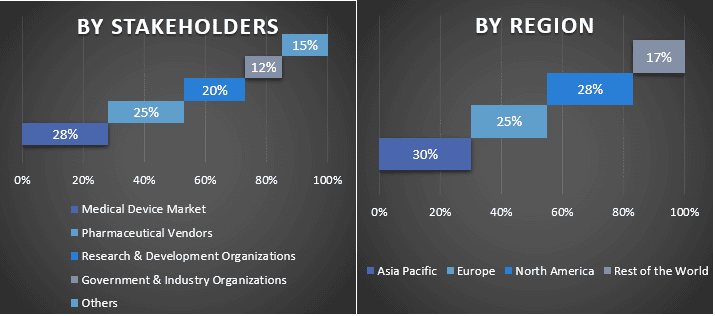
Market Engineering
The data triangulation technique was employed to complete the overall market estimation and to arrive at precise statistical numbers for each segment and sub-segment of the global hereditary deafness market. Data was split into several segments & sub-segments post studying various parameters and trends in the areas of diagnosis type, treatment type, and regions in the global hereditary deafness market.
The main objective of the Global Proteasome Inhibitor Market Study
The current & future market trends of the global hereditary deafness market were pinpointed in the study. Investors can gain strategic insights to base their discretion for investments on the qualitative and quantitative analysis performed in the study. Current and future market trends determined the overall attractiveness of the market at a regional level, providing a platform for the industrial participant to exploit the untapped market to benefit from a first-mover advantage. Other quantitative goals of the studies include:
- Analyze the current and forecast market size of the hereditary deafness market in terms of value (USD). Also, analyze the current and forecast market size of different segments and sub-segments.
- Segments in the study include areas of diagnosis type, treatment type, and regions.
- Define and analyze the regulatory framework for the hereditary deafness industry.
- Analyze the value chain involved with the presence of various intermediaries, along with analyzing customer and competitor behaviors of the industry.
- Analyze the current and forecast market size of the hereditary deafness market for the major region.
- Major countries of regions studied in the report include Asia Pacific, Europe, North America, and the Rest of the World.
- Company profiles of the hereditary deafness market and the growth strategies adopted by the market players to sustain in the fast-growing market.
- Deep dive regional level analysis of the industry.
Frequently Asked Questions FAQs
Q1: What is the current market size and growth potential of the hereditary deafness market?
Q2: What are the driving factors for the growth of the hereditary deafness market?
Q3: Which segment has the largest share of the hereditary deafness market by diagnosis type?
Q4: What are the emerging technologies and trends in the hereditary deafness market?
Q5: Which region will dominate the hereditary deafness market?
Q6: Who are the key players operating in the hereditary deafness market?
Related Reports
Customers who bought this item also bought


